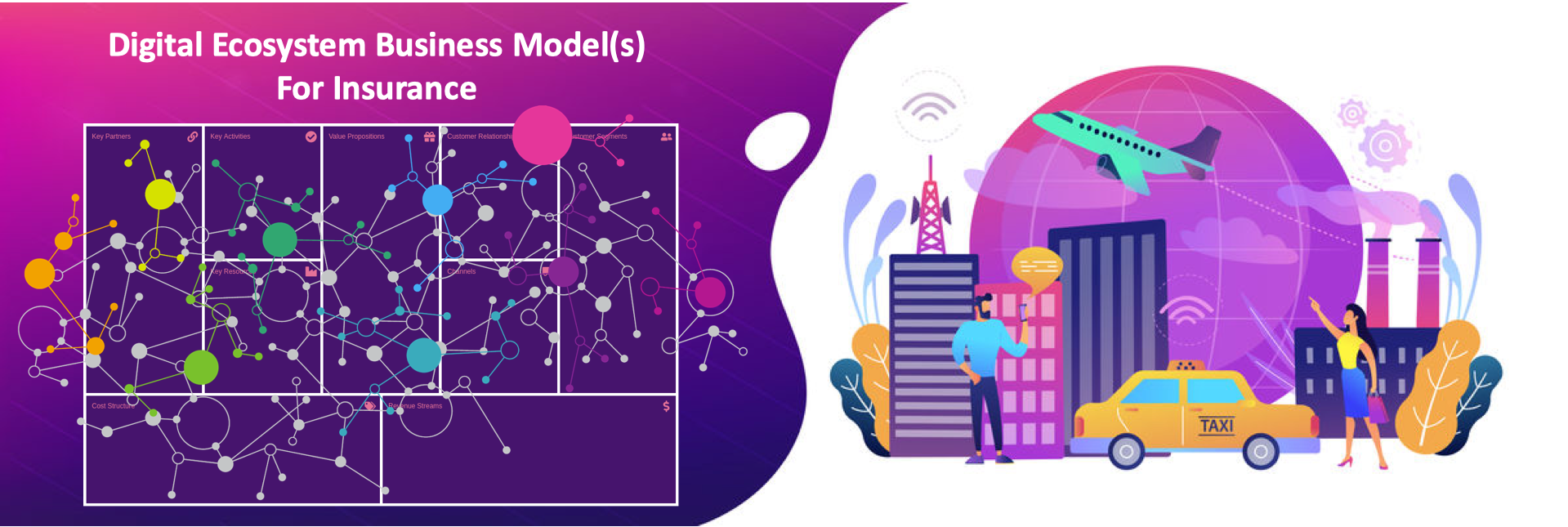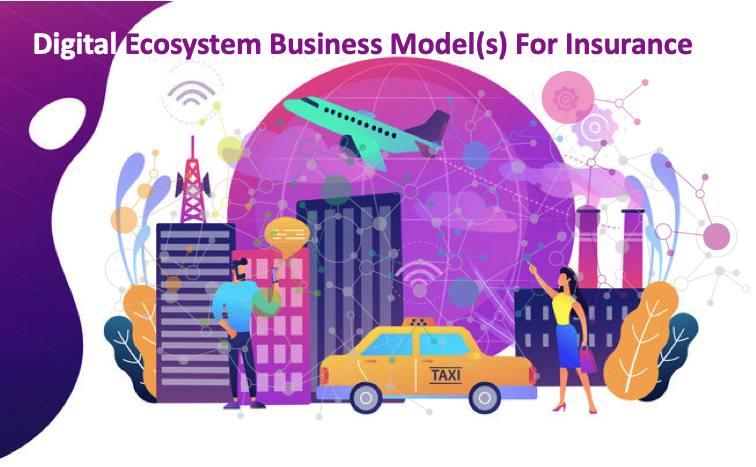
Designing Insurance Business Models to Thrive in A Digital Future





Both personalities play a role in how individuals work within the realm of technology and today’s fast-paced changing world.










What will it take to Survive & Thrive in the New Insurance Paradigm: Insights from our June Summit
A new paradigm composed of digital ecosystem enabled solutions and business models is fast approaching. That new paradigm will be composed of Insurance solutions that are Faster, Hyper-Connected, and Incredibly Intelligent. Those solutions will be Interactive components of the digital ecosystems surrounding us. They will work interactively to safeguard our families, businesses, communities, and nations. And, they will proactively identify emerging risks and decisions that optimize outcomes transparent and actionable at and between those levels,
Insurers need to be Fearless, Flexible, have fun, and learn to fail fast if they expect to survive. Leading brokers are on the hunt for carriers that can help them deliver these next-generation customer-centric solutions.

Watching insurance CEOs grappling with InsurTechs, emerging technologies, and rapidly changing customer expectations a few years ago, was like watching a struggling new guitar student. That’s Changing! They started struggling to make fingers form uncomfortable new positions. Failing to coordinate right-hand and left-hand movements. Trying desperately to make their beginner’s voice and hands resemble something close to the song they were trying to play. Many got frustrated and put the guitar or digital innovation back in the case. More than a few persevered. They’ve moved past the first barre chords. Today they’re starting to find their digital groove, and what they’re going to do next will rock the industry.
The CEOs that hung in there are building and supporting teams that have the skills to understand and deliver digital generation solutions. They are developing a vision and strategy set in the digital future instead of the paper past. They are actively seeking and building successful partnerships with emerging technology firms and InsurTech startups. The basic chords needed to stand on the digital stage.
There are however CEOs for whom just getting up on stage and working through a cover set will never be enough. They are the ones who will take their companies and the industry to the next level. They’re building cultures and organizational structures designed to fill arenas with digitally engaged and supported customers by delivering breakthrough value to them. Value created by looking at insurance through entirely new lenses and developing business models and products designed to define the digital age of insurance. Those are the CEOs that will be recognized in the next several years as the digital rock stars of insurance’s digitally-connected future.
So what’s their setlist look like? What are the building blocks they will use to move their companies and the industry from a few basic digital chords to industry bending progressions and arrangements– Compositions that leave the rest of the industry playing in local bars while they stand on the world stage.
Optimizing Teams and Digital Lessons Learned
CEO’s who emerge as the digital stars of the insurance world will continually take stock of not only what has and hasn’t worked within their organizations, they will also look beyond insurance to understand those lessons from outside of their industry. They recognize that learning from others is as critical to innovation as learning from your own efforts.
Lessons Include
Future Proofing Investment in Digital Infrastructure
The insurance industry of the future is surrounded by a world of constant innovation and change. In order to compete and survive, it’s necessary to have a digital infrastructure that is able to support continuous innovation and change.That doesn’t mean just moving to a new core system environment. It means taking time to understand emerging technology, business, and architectural model trends and the requirements they will place on the business and your infrastructure and core systems. It’s important to select systems and architectures that are designed to continually evolve, that will support frictionless interoperability with external systems and data models. Future proofing also means evaluating potential acquisitions, not just for the lines of business or customer base they represent, but also for whether their core systems and architecture will be an anchor or a catalyst in helping you succeed in the digital future.
Reimagining Insurance from the Outside in
The best leaders are creating a vision from the outside in. They are starting with the customer and trying to understand their goals, challenges, and circumstances. Starting there gives them a better line of sight into where they can create incremental value for the customer. In a digital world that also means understanding how the user will be using technology to support their goals and lifestyle. With that as a base, they can then look at how emerging technology can be added to the mix to better support and enable the customer.
Harnessing the Power of Digital Ecosystems
The next step is to understand the digital ecosystems surrounding the insured and how the solutions, devices, and data within those are supporting the customer. Developing a map of those ecosystems and the value they create is the first step. Next, they can assess what role insurance can play in those ecosystems and how combined with the other solutions and data can be developed into powerful new insurance business models and products.
Born to Partner
In a digital world where interoperable ecosystems and solutions can be combined instantly to form new highly personalized solutions to meet real-time contextual needs, partnering is imperative. Excelling at partnering in a world of digital ecosystems requires the ability to partner instantly from a business and technology standpoint. Examples of this are the “there’s an app for that” world of Apple, and the Salesforce AppEchange. As an ecosystem and platform owner, they make it very easy for partners to develop and deploy solutions into their platform and make it even easier for customers to access those. There are no long drawn out contract negotiations or application integration cycles. It’s literally plug and play from a business and technical standpoint. This is where the next generation of ecosystem-based insurance solutions are headed. Without that kind of partnering capability, companies won’t survive.
Continually Reinvent
With the average life expectancy of large companies decreasing and the pace of innovation increasing, companies that survive will be the ones that never stop reinventing themselves. So like Jazz or country music today which are continually evolving and constantly and creatively being reinterpreted, the insurance industry must do the same.
Think about Apple. It went from selling personal computers, to completely redefining the music distribution business, to redefining the mobile phone industry. Think about Netflix that went from distributing CDs in vending machines to the online powerhouse it is today. Or, Amazon moving from an online bookseller to the world’s largest retailer.
These companies never stop seeing the world differently and reinventing how industries work. Insurance companies that expect to survive in a digital economy must do the same. The CEOs who guide their companies using the above formula will emerge as leaders that will play on the world’s stage. The rest will fall behind and can expect nothing more than to be playing in the local bar.
Come listen to topics like this and others from innovative industry leaders at InsurTech FUSION Summit on June 18 -19 in San Francisco.
Stay on top of all the latest InsurTech news and trends on the SVIA blog!


Digital ecosystems are taking over industry after industry, especially those with a focus on products and services. From home buying services to banking to insurance, digital ecosystems are changing the way consumers and companies do business.
A simple example is Intuit, the online financial management software. Intuit makes it easy to connect all of your financial solutions and data together into one easy-to-manage solution. Another example is what John Hancock is doing with their life insurance offering. They offer rewards based on healthy food purchases and activities from wellness trackers such as Fitbits.
Insurance and InsurTech innovators are exploring and harnessing the digital ecosystems that surround and support people, their lifestyles, and stages of life. They are also exploring the digital ecosystems surrounding and supporting industries and the businesses within them. Digital ecosystems are composed of cloud-based interoperable platforms, solutions, devices, and data. The impact of digital ecosystems grows as the solutions within them grow in number, capability, interoperability, and the value they create. The solutions these innovators develop and/or become part of will completely upend the world of insurance.
Auto insurance, health insurance, coverage around businesses, and even life insurance will all be dramatically changed by these tech-forward ecosystem-enabled solutions and will set new standards in the value and the digital experience provided to insurance customers.
Participants across the industry are tapping into these digital ecosystems opening the door to growth and innovation opportunities.That includes InsurTechs and insurance companies. It also includes innovative solution providers like Majesco and other solution providers are developing platform strategies that make it easy for their insurance customers to tap into the data, analytics, and cloud-based insurance solutions that are available within digital ecosystems. This accelerates insurance companies’ and InsurTechs’ ability to modernize and streamline their processes and services and bring innovative solutions to market more quickly.
Digital ecosystems are helping insurance companies, brokers, agents, and InsurTech companies to open up new pathways in order to retain current customers and attract new customers with traditional services, as well as modern products.
Customer Engagement
Digital ecosystems are creating a number of new ways in which companies can connect with and stay in touch with customers. Multiple touchpoints, like mobile devices, wearables, social media, email, artificial intelligence-driven chatbots, and more are literally opening up avenues for companies to create new value and engage with customers. That includes value added solutions that become part of a broader insurance offering such as activity and diet trackers.
What’s more, having access to the data and insights that come back from these devices and solutions helps insurance companies personalize the insurance products and customer experience for individuals and businesses. Competing on a successful level in the future will require that insurers develop new capabilities and an ecosystem of partners that enable data-and-analytics-powered solutions to engage and create value for customers.
Risk Identification
Another major way in which digital ecosystems are changing the insurance industry, as well as the customer-consumer experience, is to help identify risks and gaps in coverage, which in turn will personalize and improve the overall experience for the customer.
New policies that adjust the price or overall coverage in relation to changing risk identifiers are creating incentives to manage risk more directly and actively. Some companies are now producing policies that provide premium credits to people who live a healthier and risk-free lifestyle.
Think about how Progressive Auto Insurance provides discounts and breaks for customers who drive better. The company uses technology known as Snapshot to see how their customer is driving and give them incentives based on their driver safety skills. Innovative insurers are exploring more potential around next-generation policies in other casualty areas to adjust price or coverage and use real-time streams to process claims more accurately and efficiently.
Creating Customer Value with Digital Claims Processes
The ability to tap into the devices, solutions, and data in the digital ecosystem surrounding the end insured is changing the traditional claims management system from an adversarial relationship with the customer to one that actually improves customer loyalty. Using data from devices and other sources, claims can be automatically generated and resolved. Examples of this are emerging in everything from flood to crop to auto to home appliances. The most innovative insurance companies are using these data sources and analytics-driven approaches to automate the entire claims-handling and fraud-detection process.
Chatbot-based systems, for example, are offering customers an automated claims payout process within a matter of seconds. This can be seen in digital native companies like Lemonade, a young startup insurance company that utilizes technology and behavioral science in every aspect of its services. Lemonade works actively with its customers to prevent claims and provide services that add value to customers.
Strategy and Partnering
Insurance companies and InsurTechs (and the tech vendors that support them) that want to succeed in a digital ecosystem market need to develop a culture and strategy that continually evaluates the ecosystems surrounding customers for solutions and data. Doing so will enable them to optimize the value they create and the experience they provide for customers as well as improve the effectiveness of internal processes. Companies like Rein provide insurers and other InsurTechs a next-generation platform and ecosystem that enables companies to bring digital generation insurance solutions that leverage ecosystem solutions and data and machine learning to market faster. From regulatory compliance to risk selection to security features, companies like Rein are helping accelerate the ability of insurance innovators to tap the power and speed of innovation provided by digital ecosystems.
The world of insurance is changing, and doing things the traditional way won’t take companies far enough. With the availability for more digitally-connected data and services and customer experiences, the consumer is demanding products and services that provide them the benefits provided by ecosystem enabled solutions.
Developing a digital ecosystem strategy is a necessity in today’s world. It requires thinking about the customer in a digital world and how the insurer can create value for them by becoming an integral and interoperable part of that world to see how they can successfully support their customers with effective insurance options and services. When this is determined and outlined in an effective way, insurance and InsurTech companies will be able to develop the right strategies and the right partnerships with which to develop products and customer experiences that give them a sustainable competitive advantage.